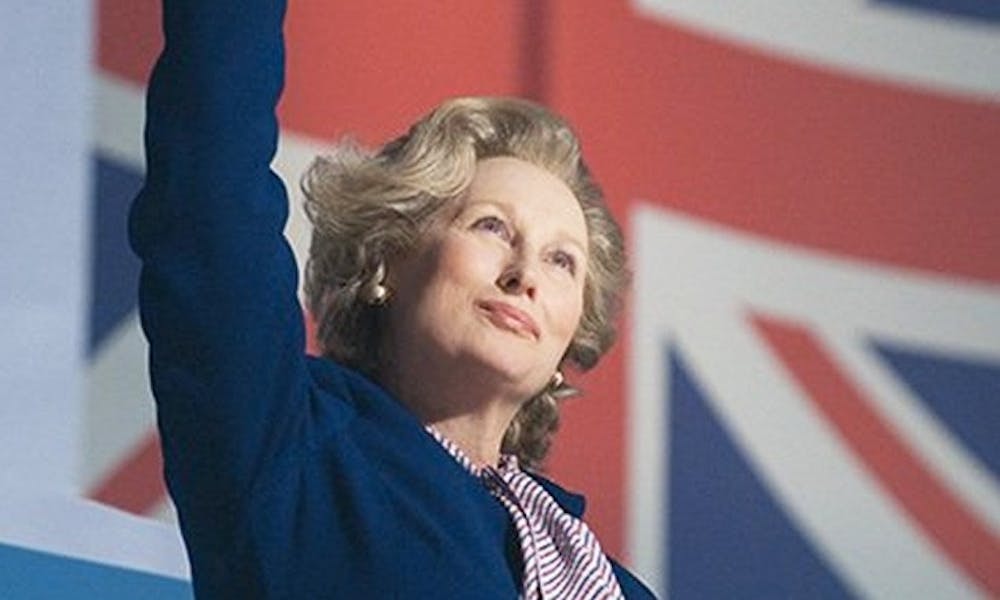The Iron Lady has two monumental shining qualities: the director’s layout and Meryl Streep. Director Phyllida Lloyd (Mamma Mia!) essentially assigns Streep two roles: the strong-willed yet flawed leader Margaret Thatcher of the past, and the decrepit and seemingly feeble Margaret Thatcher of the present day. In doing so, he focuses on the isolating and emotionally destructive effects of leadership, and wonders whether damage can be reversed and guilt reconciled. Lloyd ingeniously parallels Thatcher’s past battles with gender roles, class stereotypes, political opposition, and betrayal with her present-day internal struggle with family guilt and dementia, artistically illustrated both by the amusing yet haunting hallucination of her late husband (Broadbent) and by the chronological yet fragmented flashbacks of Thatcher’s rise to and reign as Prime Minister.
Streep is phenomenal in both of her roles, but the emotionally distraught 86-year-old ex-Prime Minister holds more weight. Streep depicts the young Thatcher as poised, intelligent, and ambitious while still underscoring her obstinacy, her brittleness, and her torment at the breaking of her family and the waning of her influence. As for the Thatcher of the present day, however, Streep flawlessly portrays the near-tragic old woman trapped in the past. The youthful and vibrant qualities that made Thatcher who she was conflict with the ailments of age that make her who she’s become, and Streep’s performance of it is, frankly, Oscar-worthy.
Despite these strengths, the film fails on one note: it frequently supposes that the audience is familiar with Thatcher’s political legacy and late 20th century British history, which can cause frequent disconnects and thus weaken the film’s efficacy. And, perhaps because Streep seems stronger when playing the older Thatcher, Lloyd throws off the pacing of the film by spending too much time in the present day. Furthermore, when the film does jump to the past, some of Thatcher’s memories appear as montages of news reports haphazardly placed in the movie; the lack of Streep in these sequences reduces them to little more than quick factual ways to move forward instead of effective emotive sequences. Additionally, large time differences between some of the memories cause an implicit dismissal of half of Thatcher’s rise to power and time as Prime Minister.
Overall, Lloyd’s choice to juxtapose the present and past is a decent one, and this decision, coupled with Streep’s outstanding performance, admittedly adds strength to the film. But when the credits roll, Streep’s performance is ultimately more interesting than the story she’s supposed to be a part of, and as a whole it doesn’t seem as poignant as it should.
Get The Chronicle straight to your inbox
Signup for our weekly newsletter. Cancel at any time.

